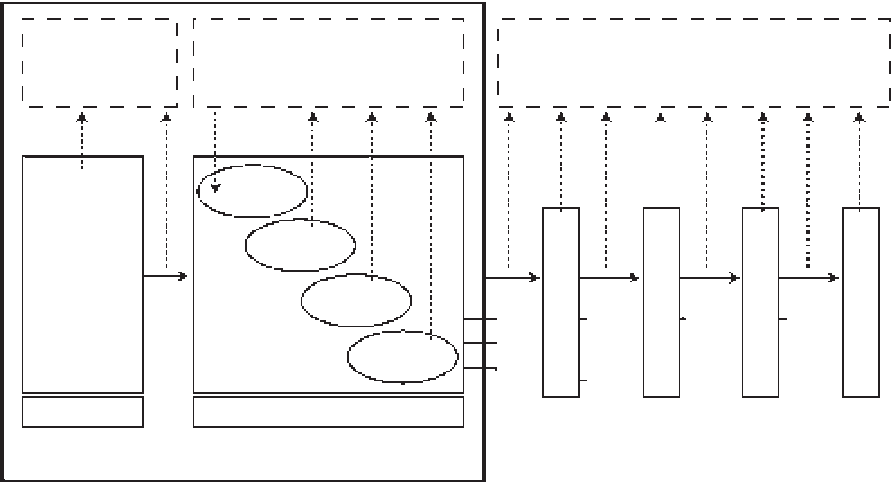Agriculture Reference
In-Depth Information
can be raised on pastureland that would not
support other forms of agriculture, thus a FU
that considers type of land may be a more appro-
priate means of comparing amongst livestock
commodities. For example, Wilkinson (2011)
proposed that a more appropriate comparison
between livestock systems would account for the
proportions of human-edible and inedible feeds.
As the essential component of the human
diet provided by meat, milk and eggs is protein,
some have argued that a more appropriate FU
for comparing livestock products is amount of
protein or energy provided (de Vries and de Boer,
2010; Dyer
et al
., 2010). In an analysis of GHG
emissions from livestock production using a FU
of kg CO
2
e kg
−1
of protein, de Vries and de Boer
(2010) reported for OECD countries that pro-
duction of milk (24-38), pork (21-53), chicken
(18-36) and eggs (30-38) were relatively simi-
lar, but beef was much higher (75-170). In a
Canadian study, Dyer
et al
. (2010) reported kg
CO
2
e kg
−1
of protein as 119 for beef, 32 for milk,
25 for pork, 22 for eggs and 11 for chicken.
These studies indicate that beef production is a
relatively inefficient means of producing protein
from the perspective of GHG emissions, a finding
that needs to be considered relative to the
many ancillary environmental benefits of beef
production. Grazing and forage lands used in beef
cattle production play an important role in pre-
serving and building soil carbon reserves, conser-
vation of biodiversity, water quality and wildlife
habitat (Janzen, 2011). Thus, choice of FU for the
LCA is an important consideration and will
greatly affect the outcome and interpretation.
System Boundary
The system boundary defines the processes to be
included in the LCA. The choice of elements
included in the assessment depends on the goal
and scope of the study (ISO, 2006). In undertak-
ing a LCA of livestock products the system bound-
ary might include the production and transport
of inputs used on the farm, livestock production
on the farm, transportation of products from the
farm and between sectors, processing, wholesaling
and retail distribution of the product, and finally
handling and consumption by the consumer
(Fig. 14.1). Inputs to the farm may include feed,
feed additives, implants, fertilizer, herbicides, man-
ufacture of tractors, barns and other capital
equipment etc. but how far upstream the inputs
are traced is a difficult issue, and is often hampered
by lack of information or is associated with high
Secondary sources
Primary sinks and sources
Tertiary sources
CH
4
N
2
O
CO
2
CO
2
CH
4
N
2
O
CO
2
CO
2
N
2
O
CH
4
CO
2
CO
2
Fuel
Electricity
Fertilizer
Pesticide
Machinery
Purchased
feeds
Purchased
heifers
Other
Pasture
Feed
production
Dairy
production
T
T
T
T
T
Milk
Milk and
value-
added
products
Products
Products
Cull
cows
Calves
Manure
handling
Meat
Inputs
Dairy farm
'Cradle-to-farm gate'
Fig. 14.1.
System diagram showing the main life cycle stages, including inputs, outputs and flows, in a
theoretical dairy production system as well as the system boundary for a 'cradle to farm gate' life cycle
assessment (adapted from Rotz
et al
., 2010 and Ledgard
et al
., 2011; T, transportation).

